Related Research Articles

Pietro da Cortona was an Italian Baroque painter and architect. Along with his contemporaries and rivals Gian Lorenzo Bernini and Francesco Borromini, he was one of the key figures in the emergence of Roman Baroque architecture. He was also an important designer of interior decorations.
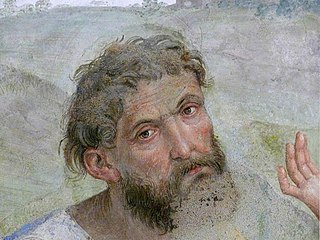
Lo Spagna, "the Spaniard" in Italian, was a painter of the High Renaissance, active in central Italy. His name was Giovanni di Pietro, but he was known as Lo Spagna because he was born in Spain. After Raphael, he was a main pupil and follower of the Umbrian painter Perugino, whose style his paintings develop. He should not be confused with Pietro di Giovanni D'Ambrogio of Siena.

Vincenzo Camuccini was an Italian painter of Neoclassic histories and religious paintings. He was considered the premier academic painter of his time in Rome.

The Accademia di San Luca is an Italian academy of artists in Rome. The establishment of the Accademia de i Pittori e Scultori di Roma was approved by papal brief in 1577, and in 1593 Federico Zuccari became its first principe or director; the statutes were ratified in 1607. Other founders included Girolamo Muziano and Pietro Olivieri. The Academy was named for Luke the Evangelist, believed to be the patron saint of painters.

Giovanni Santi was an Italian painter, decorator, and the father of Raphael. He was born in 1435 at Colbordolo in the Duchy of Urbino. He studied under Piero della Francesca and was influenced by Fiorenzo di Lorenzo. He was court painter to the Duke of Urbino and painted several altarpieces. He died in Urbino.
Events from the year 1748 in art.

Giovanni Pietro Bellori, also known as Giovan Pietro Bellori or Gian Pietro Bellori, was an Italian painter and antiquarian, but, more famously, a prominent biographer of artists of the 17th century, equivalent to Giorgio Vasari in the 16th century. His Lives of the Artists, published in 1672, was influential in consolidating and promoting the theoretical case for classical idealism in art. «Bellori is the "predecessor of Winckelmann" not only as an antiquarian but also as an art theorist. Winckelmann's theory of the "ideally beautiful" as he expounds it in Geschichte der Kunst des Altertums, IV.2.33 ff., thoroughly agrees—except for the somewhat stronger Neoplatonic impact, which is to be explained perhaps more as an influence of Raphael Mengs than as an influence of Shaftesbury—with the content of Bellori's Idea ; he frankly recognizes this indebtedness in Anmerkungen zur Geschichte der Kunst des Altertums (1767), p. 36.» As an art historical biographer, he favoured classicising artists rather than Baroque artists to the extent of omitting some of the key artistic figures of 17th-century art altogether.

Francesco Trevisani was an Italian painter, active in the period called either early Rococo or late Baroque (barochetto).

Giovanni Francesco Romanelli was a major Italian painter of the Baroque period, celebrated for his use of bright, vivid colors and also for his clarity of detail. Many of his works are on display in the Louvre.
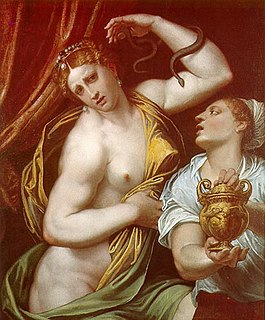
Domenico Riccio was an Italian painter in a Mannerist style from Verona, best known for frescos.

Pietro Paolini, called il Lucchese was an Italian painter of the Baroque period. Working in Rome, Venice and finally his native Lucca, he was a follower of Caravaggio to whose work he responded in a very personal manner. He founded an Academy in his hometown, which formed the next generation of painters of Lucca.
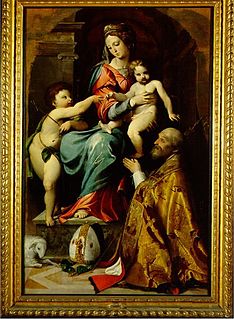
Giovanni Francesco Bembo was an Italian Renaissance painter from Cremona, mainly active from 1515 to 1543. He apprenticed with Boccaccio Boccaccino. In 1515, he painted two frescoes: Presentation in the Temple and an Adoration of the Magi for the Duomo of Cremona. He painted an altarpiece for San Pietro depicting a Madonna with three saints and a donor in 1524. In 1530, he painted a Madonna with Saint Stephen and in 1540, a Madonna with St. John the Baptist and a Bishop now in the Museo Civico.
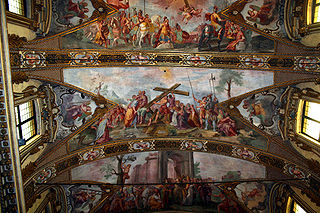
Giovanni Battista Carlone (1603–1684) was an Italian painter of the Baroque period, active mainly in Genoa.
Events from the year 1686 in art.
Giuseppe Natali (1652–1722) was an Italian painter of the Baroque period, active mainly in Cremona and Lombardy.
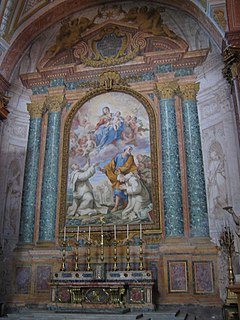
Pietro Bianchi was an Italian painter of the Baroque period, active in Genoa and Rome.
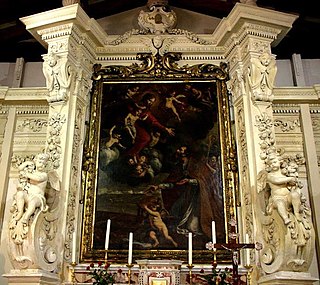
Giovanni Quagliata (1603–1673) was an Italian painter of the Baroque period. He is more properly known in Italy as Giovan Battista Quagliata, one of the leading artists of the Messinesi painters of the 17th century, as described by Francesco Susinno in his book "The Lives of the Messinesi Painters" published in 1724. Giovanni was born in Messina, Italy. He was a pupil of Pietro da Cortona and enjoyed the patronage and friendship of the Spanish Viceroy of Sicily, Don Juan José of Austria. Giovanni's brother, Andrea Quagliata, was also an historical painter, but of lesser significance. Giovanni's works – paintings, frescoes and large canvases – were famously displayed in the galleries and churches of Messina, but due to earthquakes from Mount Etna and wartime bombings, few have survived to the present day.

Giovanni Pietro Ligario (1686–1748) was an Italian painter and architect of the late-Baroque.

Giovanni Bernardo Carlone (1590–1630) was an Italian painter of the late-Mannerist and early-Baroque periods.
Ligario is a surname. Notable people with the surname include:
References
- Bryan, Michael (1889). Walter Armstrong; Robert Edmund Graves (eds.). Dictionary of Painters and Engravers, Biographical and Critical. Vol. II L-Z. London: George Bell and Sons. p. 56.
- ↑ La Valtellina: guida turistica, by Ercole Bassi, page 258.